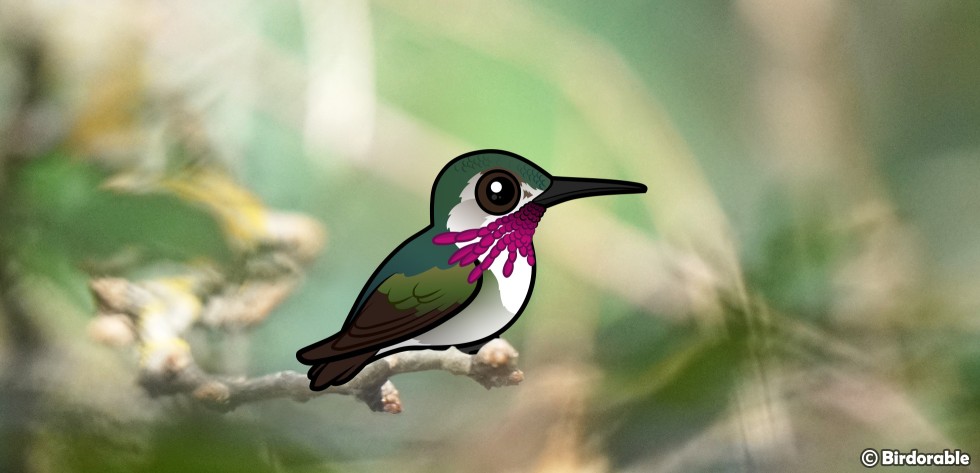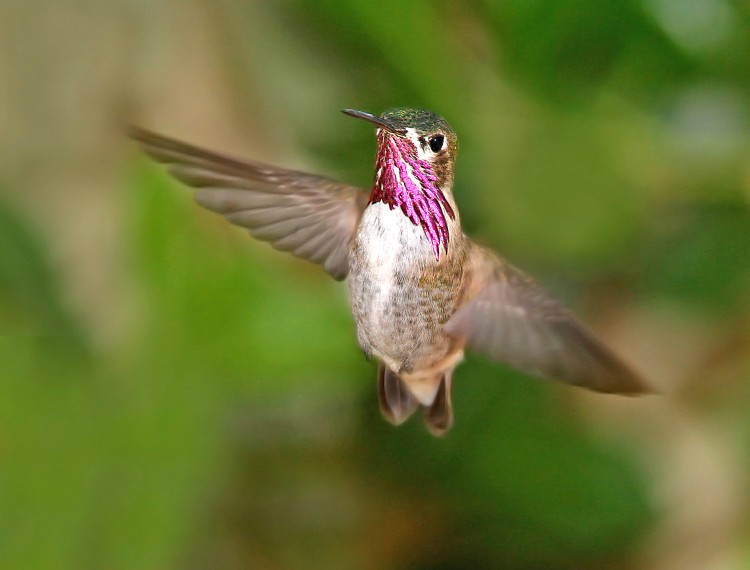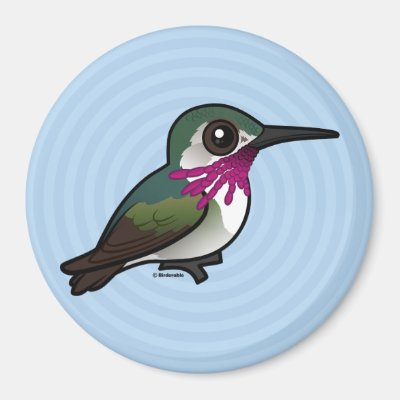Hummingbird Week 2024
The Calliope Hummingbird: A Tiny Marvel of Nature

As our Hummingbird Week 2024 starts to wind down, we are proud to introduce the smallest breeding bird of North America to our Birdorable family-- it's the Calliope Hummingbird!
The Calliope Hummingbird is a marvel in the bird world despite its small size. Named after Calliope, the muse of epic poetry in Greek mythology, this tiny bird packs a punch with its vibrant plumage and dynamic behavior. During the breeding season, these little ones are found primarily in the western United States and parts of Canada. They winter in Mexico. The Calliope Hummingbird is the world's smallest long-distance migratory bird.
First and foremost, the Calliope Hummingbird holds the title of the smallest breeding bird in North America. Measuring up to just 3.9 inches (10cm) in length and typically weighing less than 0.1 oz (2 to 3 grams), it’s hard to believe how much energy and beauty can be contained in such a tiny package. Despite its small stature, the Calliope Hummingbird exhibits incredible flying abilities, capable of hovering in place and performing swift aerial maneuvers with ease.
One of the most striking features of the Calliope Hummingbird is its vibrant plumage, especially in males. Adult males are adorned with a striking magenta streaked gorget, or throat patch, which can appear almost iridescent in the sunlight. The rest of their body is mostly green with white underparts, creating a beautiful contrast. Females and juveniles, while less colorful, still display a delicate beauty with their green backs and subtle buffy flanks.

Calliope Hummingbird by Alan Schmierer (Public Domain)
The Calliope Hummingbird’s diet consists mainly of nectar from a variety of flowering plants. They have a particular affinity for tubular flowers, which complement their long, slender bills. In addition to nectar, they also feed on small insects and spiders, which provide essential proteins. This varied diet helps maintain their high metabolism and energy levels required for their active lifestyle.
During the breeding season, the Calliope Hummingbird showcases some fascinating behaviors. Males perform a unique courtship display to attract females, involving extremely rapid wingbeats (significantly faster than normal hovering or flying wingbeats) which create a buzzing sound. This is accompanied by the display of throat feathers. After this display, the male ascends and then performs a high-speed dive, which produces different sounds as the feathers slice through the air. The male vocalizes during this performance as well -- all to attract the attention of a potential mate.
The Calliope Hummingbird is also known for its impressive migratory behavior. Despite their small size, these birds undertake long migrations, traveling from their breeding grounds in the western United States and Canada to their wintering grounds in Mexico. This journey can span over 5,000 miles round trip!
The Calliope Hummingbird is a tiny bird with an impressive presence. Its vibrant colors, dynamic behaviors, and impressive migratory feats make it a fascinating subject for bird watchers and nature enthusiasts alike. The Calliope Hummingbird joins Birdorable as our 799th bird!













Comments
Leave a comment
Thank you!